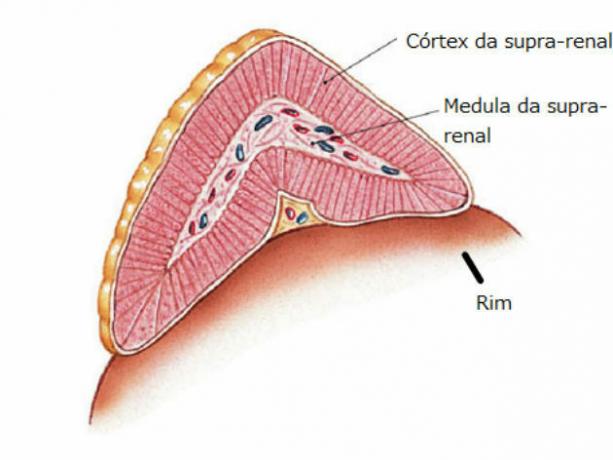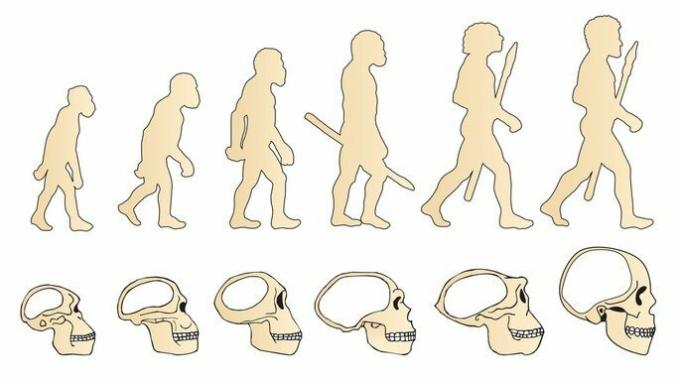The adrenal or adrenal glands are located in the abdominal cavity, just above each kidney, hence their name.
They are endocrine glands, responsible for the production of important hormones, such as adrenaline and norepinephrine, which act in various organs and participate in the body's functioning.
In the adrenal gland, two distinct regions are recognized, the medulla and the cortex. Each of these parts produce different hormones and have their own characteristics.

Function of Adrenal Glands
The main function of the adrenal glands is the production of hormones, which participate in the regulation of the levels of sodium, potassium and water in the body, in the metabolism of carbohydrates and in the body's responses in stressful situations.
Adrenal gland hormones
The main hormones produced and released by the adrenal glands are:
- Aldosterone: Acts on the balance of fluids, especially sodium and potassium in blood plasma.
- Cortisol: Known as the "stress hormone", it is responsible for controlling stress and works to maintain blood sugar levels and blood pressure.
- Adrenaline: Acts as the body's defense mechanism, preparing it for an emergency, especially in stressful situations.
- noradrenaline: Contributes in preparing the body for a certain action in moments of scare, surprise or strong emotions.
Anatomy and Histology
The adrenal glands measure about 5 cm high, 2 cm wide, 1 cm thick and weigh up to 10 g.
They have differences in shape, the one on the right has a triangular shape, while the one on the left resembles a crescent.

Anatomically, they are divided into two main zones:
- Marrow: Central and darker portion of the gland, originating from the neuroectoderm. Responsible for synthesizing and secreting the adrenaline and noradrenaline hormones, as per nervous system stimuli.
- Cortex: It constitutes up to 90% of the gland, being its external portion. It has a yellowish coloration, originating from the mesoderm and formed by epithelial tissue. It is subdivided into three parts (zone glomerulosa, fasciculate and reticular). Regulates the production of aldosterone, cortisol and sex hormones.
The adrenals are surrounded by a capsule of connective tissue and surrounded by a lot of adipose tissue.
Diseases Affecting the Adrenal Glands
Some diseases affect the adrenal glands, causing excessive or reduced production of hormones.
The main adrenal diseases are:
- Adrenal Gland Cancer: Two types of tumors can affect the adrenals, adrenal cortex adenomas (mostly benign tumors) and adrenal cortical cancer. Symptoms are often related to the pressure the tumor exerts on other organs.
- Adrenal insufficiency: A condition in which the adrenal cortex does not produce adequate steroid hormones. The main symptoms are fatigue, muscle weakness, reduced appetite, nausea and weight loss.
- Addison's Disease or Chronic Adrenal Failure: Occurs when the adrenals cannot produce their hormones in adequate amounts. Symptoms are dark spots on the skin, fatigue, muscle fatigue, lack of appetite, dehydration, vomiting and diarrhea.
- Cushing's Syndrome: Caused by excessive cortisol production due to the presence of a gland tumor or pituitary problems. Symptoms are weight gain, poor wound healing, thin arms and legs, accumulation of abdominal fat and osteoporosis.
Curiosities
- The adrenal glands were scientifically described in the year 1563, by the Italian Bartolomeu Eustachius.
- The adrenals receive one of the largest blood supplies in the human body.


